Tendonitis Yoga Pose Recommender
Find Your Perfect Yoga Routine
Select your affected area and pain level to get personalized yoga recommendations for tendonitis relief.
If you’re battling tendonitis, the constant ache and stiff joints can ruin daily life. The good news? Yoga offers a gentle, low‑impact way to calm inflammation, regain motion, and keep the pain at bay.
Below you’ll discover why yoga works, which poses target the most common tendon‑related hotspots, and how to stitch a safe routine into your week.
What Is Tendonitis?
Tendonitis is an inflammation of a tendon-the thick cord that attaches muscle to bone. When a tendon is overused or injured, it swells, hurts, and limits range of motion. Common spots include the Achilles tendon, rotator cuff, and the tendons around the wrist and elbow.
Typical symptoms are a dull ache, stiffness, and a feeling of weakness when you try to move the affected joint. If left unchecked, the inflammation can turn chronic, making everyday tasks feel like a chore.
Why Yoga Works for Tendonitis
Yoga isn’t just about bending; it blends movement, breath, and mindfulness. Here’s how that combo attacks tendonitis:
- Gentle loading: Slow, controlled poses apply a light stretch that encourages blood flow without over‑loading the tendon.
- Improved circulation: Deep breathing and moving the joints help deliver oxygen‑rich blood, flushing out inflammatory waste.
- Neuromuscular re‑education: Holding poses trains the brain‑muscle connection, teaching you to move more efficiently and avoid harmful patterns.
- Mindful relaxation: Reducing stress curbs cortisol, a hormone that can worsen inflammation.
Research from the Journal of Orthopedic & Sports Physical Therapy (2023) found a 30% reduction in pain scores after a six‑week yoga program for shoulder tendonitis, proving the science backs the feeling.
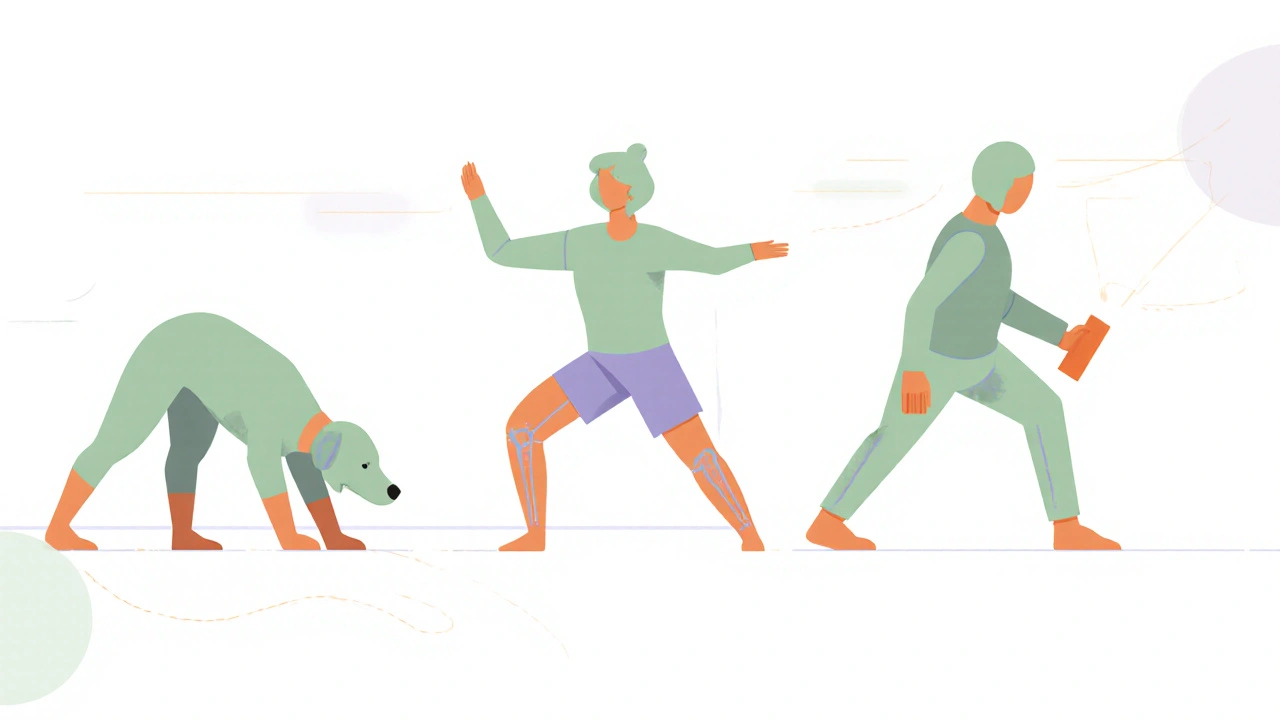
Key Yoga Poses for Common Tendonitis Sites
Below is a quick‑look table that matches each pose to the tendon it helps, the primary benefit, and a tip for beginners.
| Pose | Target Tendon | Primary Benefit | Beginner Tip |
|---|---|---|---|
| Downward‑Facing Dog | Achilles tendon | Calms calf tightness, eases ankle dorsiflexion | Keep knees slightly bent if hamstrings feel tight |
| Warrior II | Patellar tendon (kneecap) | Strengthens quadriceps without heavy impact | Maintain a micro‑bend in the front knee |
| Cat‑Cow Stretch | Rotator cuff tendons | Increases shoulder mobility, reduces impingement | Move slowly; focus on the breath |
| Extended Side Angle | Wrist extensors (common in tennis elbow) | Gently stretches forearm muscles, relieving tension | Rest the forearm on a block for support |
| Supported Bridge | Gluteal tendons & lower back | Activates hip extensors, improves pelvic alignment | Place a bolster under the sacrum for comfort |
Notice how each pose stays within a pain‑free range. If a stretch makes you wince, back off a little-pain is your body's alarm.
Building a Gentle Yoga Routine
Start with a 15‑minute session three times a week and gradually extend to 30 minutes as your body adapts. Here’s a simple flow:
- Begin with 3 minutes of mindful breathing (sit cross‑legged, inhale through the nose, exhale through the mouth).
- Move into Cat‑Cow Stretch for 1 minute, syncing each movement with the breath.
- Transition to Downward‑Facing Dog for 2 minutes, bending knees as needed.
- Shift forward into Warrior II on each side, holding for 30 seconds.
- Slide into Extended Side Angle for 30 seconds per side, using a block for the forearm.
- Finish with a 3‑minute Supported Bridge, focusing on gentle hip opening.
- Close with 2 minutes of seated meditation, visualizing the tendon healing and the body moving freely.
Listen to your body. If a pose feels tight, modify with props-blocks, blankets, or a wall.
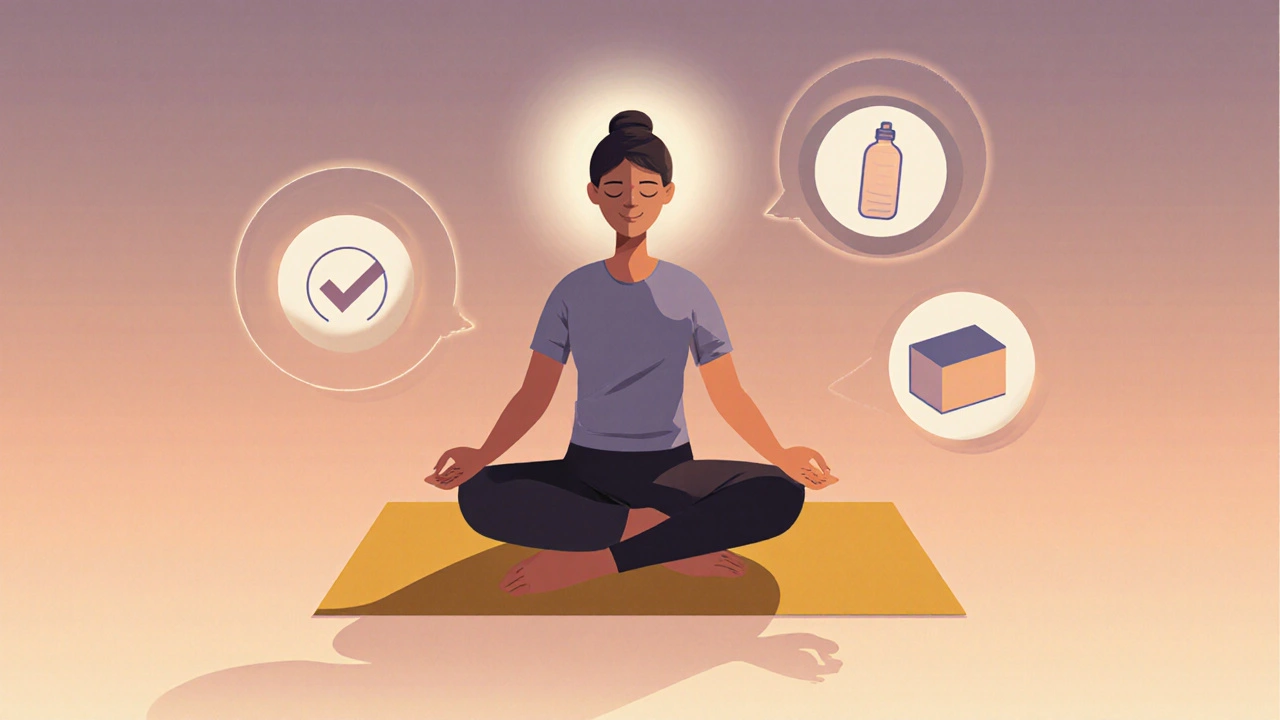
Safety Tips & When to Seek Professional Care
Yoga is safe for most, but a few rules keep it helpful rather than harmful:
- Warm‑up first: Warm muscles respond better; a light walk or joint circles for 5 minutes helps.
- Avoid over‑stretching: Tendon tissue should feel a gentle pull, never sharp pain.
- Stay consistent: Regular short sessions beat occasional marathon workouts.
- Watch for red flags: Increasing swelling, severe throbbing, or loss of function warrants a doctor’s visit.
Physical therapy can complement yoga, especially for severe cases. Combining the two often speeds recovery, as therapists can fine‑tune movements to your specific anatomy.
Quick Checklist for Daily Practice
- ✔ 5‑minute breath focus before any movement.
- ✔ 2‑minute Downward‑Facing Dog (knees bent if needed).
- ✔ 30‑second Warrior II each side.
- ✔ 30‑second Extended Side Angle each side.
- ✔ 2‑minute Supported Bridge at night.
- ✔ Hydrate and note any changes in pain.
Mark these off each day; the habit of gentle stretch is the real magic.
Can yoga replace my physical therapist?
Yoga is a great complement, but it isn’t a full substitute for professional rehab when you have severe inflammation or structural issues. Use yoga alongside therapist‑guided exercises for best results.
How long before I feel relief?
Most people notice reduced stiffness after 2‑3 weeks of consistent practice. Significant pain reduction often shows up around the 6‑week mark.
What if a pose hurts my tendon?
Stop immediately. The sensation should be a mild stretch, not sharp pain. Try a gentler variation, use props, or skip that pose until the tendon feels better.
Do I need special equipment?
A yoga mat, a couple of blocks, and a strap are enough. A bolster or firm pillow works well for the Supported Bridge.
Can I practice yoga if I’m already on anti‑inflammatory medication?
Yes, yoga can enhance the medication’s effect by improving circulation. Just keep your doctor informed, especially if you plan to increase activity.

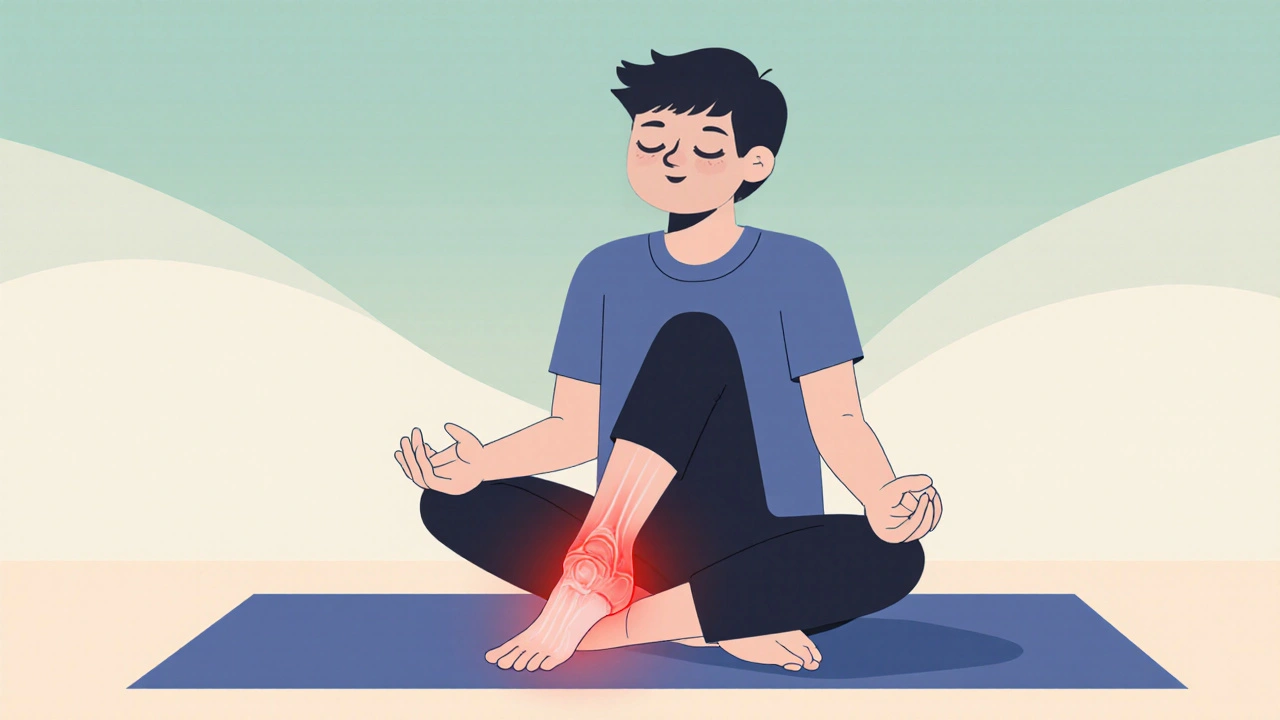
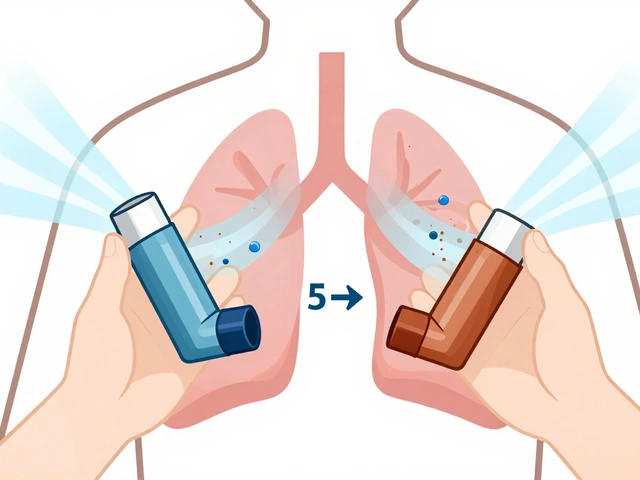


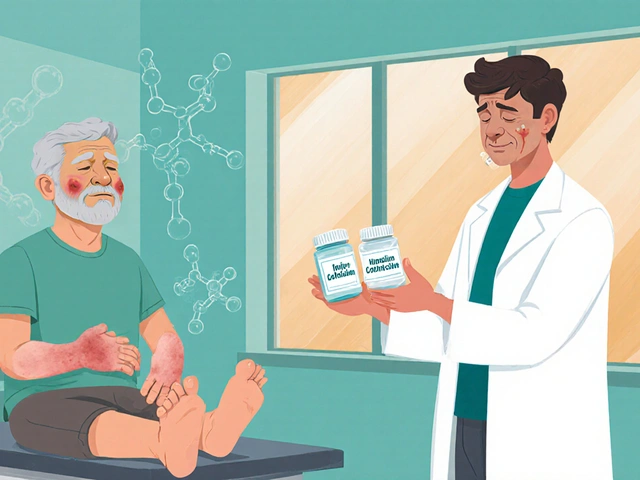

Caleb Clark
October 22, 2025 AT 14:32Hey folks! If you’re fighting tendonitis, don’t let it win – you’ve got a whole toolbox of gentle moves that can actually soothe the inflammation and bring back that sweet feeling of mobility. Start with a few minutes of deep breathing, because calm lungs pump more oxygen to your sore tendons and that’s a game‑changer. Then roll into Cat‑Cow, moving slow as molasses, syncing each wave with your breath, and you’ll notice a subtle warm‑up in the shoulders and wrists. Downward‑Facing Dog next, but keep those knees soft; you’re not trying to nail a perfect split, you’re just encouraging blood flow to the Achilles. Warrior II is brilliant for the knee and patellar tendon – hold it just long enough to feel a mild stretch, never a sharp snap. Extended Side Angle lets the forearm relax, especially if you spend hours typing, and a block under the hand is a sweet safety net. Finish with a Supported Bridge for a gentle hip opener that also eases lower back tension, and seal the session with a quiet minute of visualising the tendon healing. Remember, the golden rule: pain is a warning, not a badge of honor – ease off the edge if it starts to sting. Consistency beats intensity every time; three 15‑minute sessions a week will outpace a marathon once‑a‑month. And hey, if you ever feel a twinge that’s more than a mild pull, pause, use a prop, or skip that pose altogether until the area calms down. Over time you’ll see stiffness melt away, range of motion widen, and that nagging ache become a distant memory. Keep a little journal of your pain levels – you’ll be amazed at the progress you can track. And don’t forget to hydrate; water helps flush inflammatory by‑products out of your system. Lastly, be kind to yourself – healing is a journey, not a sprint, and every tiny win adds up. You’ve got this, and yoga’s got your back (and your tendons!).
Eileen Peck
October 22, 2025 AT 14:43I really appreciate how this guide breaks things down into bite‑size steps. The table with poses and tendon targets makes it super easy to pick a routine that matches your specific pain point. I’ve found that the gentle loading you get from Downward‑Dog and Cat‑Cow can calm that dull ache without over‑doing it. Just remember to keep the breath deep – it’s amazing how much oxygen helps with inflammation. And if any pose feels too tight, using a block or a blanket is a smart move; comfort should always come first.
Oliver Johnson
October 22, 2025 AT 15:00Yoga? That’s just liitle stretches for lazy people. Real healing comes from heavy lifting, not some flimsy poses.
Kelly Brammer
October 22, 2025 AT 15:16Practicing yoga while ignoring professional medical advice is ethically questionable and can lead to further injury.
Ben Collins
October 22, 2025 AT 15:33Oh sure, Oliver, because “heavy lifting” is the secret sauce for tendonitis relief. Maybe next you’ll suggest sky‑diving without a parachute.
Kelli Benedik
October 22, 2025 AT 15:50Kelly, I get the moral high ground, but sometimes a little flexibility in thinking helps! 🙃
Honestly, I’ve tried those poses and felt a *tiny* spark of relief, so I’m not ready to throw the mat away just yet. 🌟
Holly Green
October 22, 2025 AT 16:06Honestly, you don’t need yoga – just follow the proper rehab protocol and you’ll be fine.
Craig E
October 22, 2025 AT 16:23While structured rehab is essential, the mind‑body connection cultivated through yoga can complement physical therapy by reducing stress‑induced inflammation. A balanced approach often yields the most sustainable recovery.